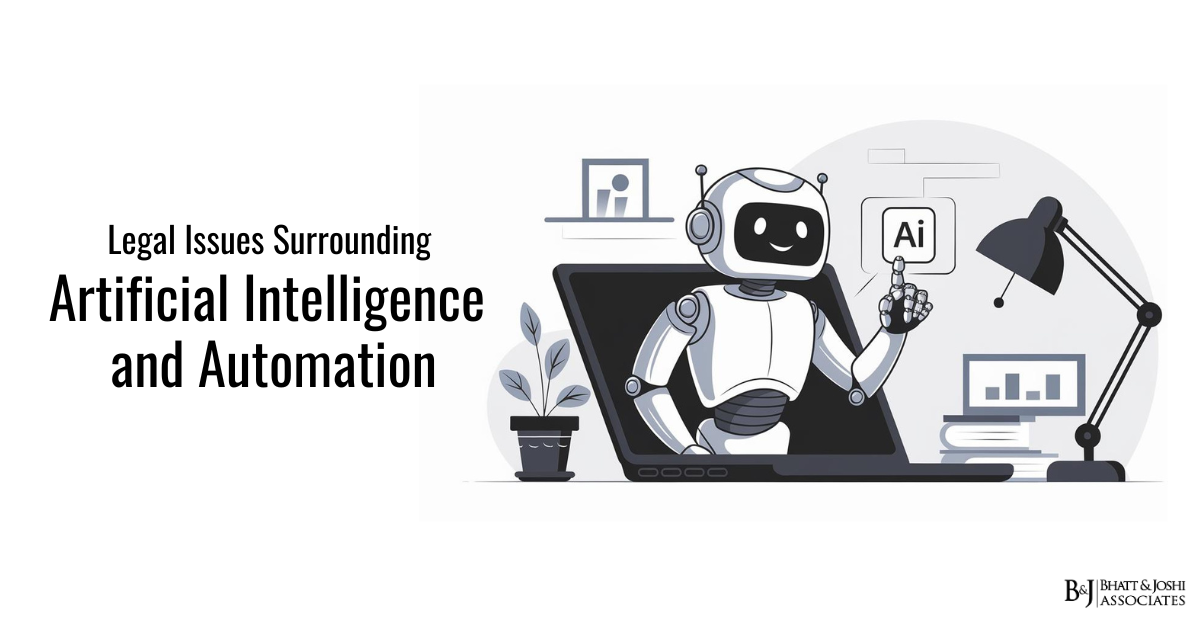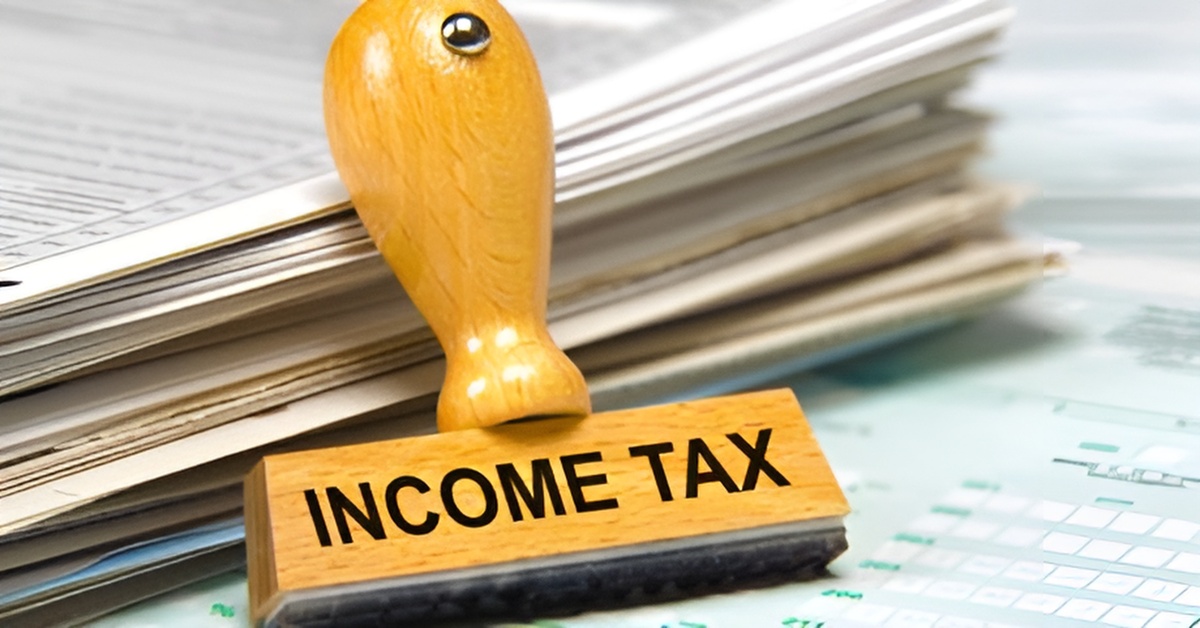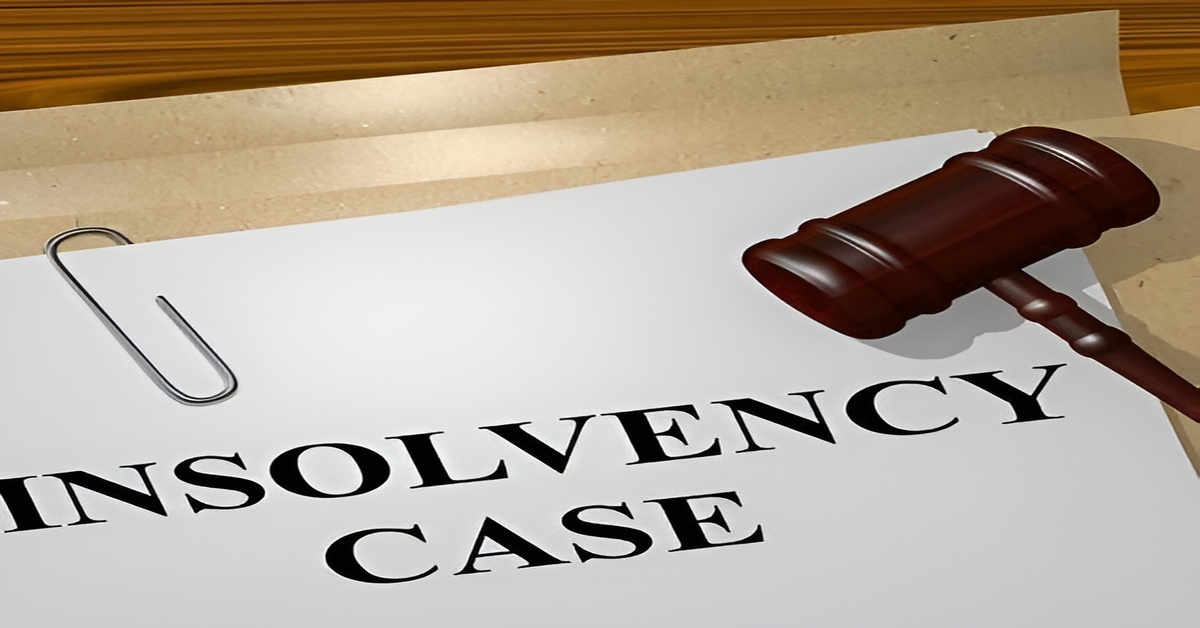Introduction to Artificial Intelligence and Automation
Artificial Intelligence (AI) and automation have become transformative forces in various industries, from manufacturing and healthcare to finance and legal services. As these technologies continue to advance, they raise profound legal and ethical questions. The integration of AI systems into daily operations challenges existing legal frameworks, particularly regarding issues like liability, privacy, intellectual property (IP), bias, labor rights, and accountability. As governments and legal institutions struggle to catch up with the pace of technological innovation, significant efforts are underway globally to create a legal infrastructure that effectively addresses these concerns. In this article, we will examine the legal issues with artificial intelligence and automation, how these are regulated, and the role of case laws and judgments in shaping the legal landscape. We will explore the core areas of legal concern—liability, intellectual property, privacy and data protection, bias and discrimination, labor law, and the use of AI in criminal law—offering insights into the current state of regulation and governance.
Regulation of Artificial Intelligence and Automation: Global Efforts and Divergence
As artificial intelligence and automation technology becomes more ubiquitous, governments worldwide are working to regulate its use while fostering innovation. However, there is no universal regulatory framework, and approaches differ significantly from one jurisdiction to another.
In the European Union, the Artificial Intelligence Act (AI Act) proposed in 2021 represents the most ambitious attempt to create a regulatory structure specific to AI. The act takes a risk-based approach, categorizing AI systems based on their potential impact on society. It prohibits certain AI applications deemed “unacceptable,” such as systems used for social scoring or subliminal manipulation, and imposes stringent requirements on “high-risk” AI applications, such as those used in critical infrastructure, healthcare, or law enforcement. The AI Act requires developers of high-risk AI systems to comply with transparency, safety, and ethical standards, ensuring human oversight and accountability.
In contrast, the United States lacks a comprehensive, unified AI regulatory framework. Federal regulation of AI has been fragmented across various sectors, and existing laws often apply indirectly to AI technology. Some states, like California, have introduced data privacy laws, such as the California Consumer Privacy Act (CCPA), that affect AI systems handling personal data. Moreover, there have been efforts in Congress to introduce AI-specific legislation. For instance, the Algorithmic Accountability Act, introduced in 2019, aims to require large companies to assess and mitigate the risks of automated decision-making systems. However, this legislation has yet to be passed, leaving regulatory gaps in addressing AI’s widespread deployment.
Meanwhile, countries like China have adopted an aggressive approach to AI development and regulation. China’s Artificial Intelligence Development Plan outlines its ambition to become a global leader in AI by 2030. The government has also introduced AI-specific regulations, focusing on areas like facial recognition technology and internet surveillance. However, China’s regulatory approach tends to prioritize state control and social stability over individual privacy or ethical concerns.
These divergent approaches highlight the challenges of creating a uniform regulatory framework for AI at the global level. As artificial intelligence and automation technologies become increasingly integrated into global supply chains and markets, countries will need to collaborate on establishing international standards that balance innovation with the protection of individual rights.
Liability and Accountability: Who Is Responsible When AI Fails?
One of the most pressing legal challenges posed by artificial intelligence and automation is determining liability when AI systems cause harm. Traditional legal frameworks rely on human agency to assign responsibility, but this becomes problematic in the case of autonomous systems capable of making decisions without direct human input.
For example, the advent of self-driving cars has raised questions about who should be held liable in the event of an accident. Is it the manufacturer of the vehicle, the developer of the AI software, or the operator of the vehicle? In the case of Tesla Inc. v. Norman, Tesla faced legal action after one of its self-driving cars was involved in a collision. While the court held Tesla partially liable for the accident, the driver was also found at fault for failing to intervene. This case underscores the complexity of assigning liability when both humans and AI systems share responsibility for decision-making.
In Europe, the Product Liability Directive (85/374/EEC) provides a legal framework that holds manufacturers liable for defective products. However, the evolving nature of AI complicates the definition of a “defect.” Unlike traditional products, AI systems can learn and adapt over time, potentially altering their behavior after they are sold or deployed. This poses significant challenges for manufacturers and users alike, as it becomes difficult to predict how an AI system might behave in a given situation.
The proposed Artificial Intelligence Act in the EU seeks to address these challenges by imposing stricter liability provisions for high-risk AI applications. It mandates that developers and operators of AI systems maintain oversight, ensure transparency, and provide safeguards to prevent harm. In particular, the act requires that human operators retain “meaningful control” over AI systems, ensuring that humans remain ultimately accountable for the consequences of AI-driven actions.
In the U.S., the legal system has also faced challenges regarding AI’s role in decision-making processes. In Loomis v. Wisconsin, an algorithmic risk assessment tool was used to determine the sentencing of a defendant. The defendant argued that the use of the AI system violated his right to due process, as he was not provided with sufficient information about how the algorithm had calculated his risk score. While the court upheld the use of the AI system, the case raised significant concerns about transparency and accountability in AI-driven decision-making.
As artificial intelligence and automation continues to advance, legal systems worldwide will need to develop new frameworks that address the unique challenges posed by autonomous systems, ensuring that liability and accountability are clearly defined in the event of harm.
Impact of AI on Intellectual Property: Who Owns AI-Generated Works?
The rise of AI has created new legal challenges for intellectual property law, particularly in the areas of patents, copyrights, and trademarks. As AI systems become increasingly capable of creating new inventions, artistic works, and even music, questions arise about whether these creations should be eligible for IP protection and, if so, who should own the rights.
One of the most high-profile cases in this area is the patent application filed by the creators of DABUS, an AI system designed to invent new products. The developers of DABUS submitted patent applications in multiple jurisdictions, listing the AI system as the sole inventor. Both the U.S. Patent and Trademark Office (USPTO) and the European Patent Office (EPO) rejected the applications, ruling that only natural persons can be recognized as inventors under current patent law.
These rulings have sparked debates about the need to reform intellectual property laws to account for AI-generated inventions. Advocates argue that the developers of AI systems should be recognized as the inventors or creators of AI-generated works, as they provide the tools and algorithms that enable the AI to create. Others suggest that a new category of IP rights may be needed to address the unique nature of AI-generated content.
The issue of copyright protection for AI-generated works is similarly complex. In Feist Publications, Inc., v. Rural Telephone Service Co., Inc., the U.S. Supreme Court ruled that works must exhibit a minimal degree of human creativity to qualify for copyright protection. This ruling suggests that AI-generated works may not be eligible for copyright protection under current law, as they are not the product of human authorship.
However, some jurisdictions have begun to address this gap in the law. The UK Copyright, Designs, and Patents Act 1988 was amended in 1988 to include a provision granting copyright to the person who arranges for the creation of a computer-generated work. This suggests that AI-generated works may be eligible for copyright protection, provided that a human is involved in commissioning or overseeing the creative process.
As AI systems become more capable of generating new inventions and creative works, intellectual property law will need to adapt to ensure that both human and AI-driven contributions are appropriately recognized and protected.
Data Privacy and AI: Balancing Innovation with Individual Rights
AI systems rely heavily on data—often personal data—to function effectively. As a result, the use of AI raises significant concerns about privacy and data protection, particularly when it comes to sensitive personal information like biometric data, health records, or financial details.
The General Data Protection Regulation (GDPR) in the European Union is one of the most comprehensive data protection laws globally, imposing strict requirements on organizations that process personal data. The GDPR also includes provisions on automated decision-making, giving individuals the right not to be subject to decisions made solely by automated systems that have legal or significant effects on them.
However, applying the GDPR in practice to AI systems has proven challenging. For example, in Schrems II, a case before the European Court of Justice (CJEU), privacy activist Maximilian Schrems challenged the transfer of personal data from the EU to the U.S. by Facebook. The court ruled that the EU-U.S. Privacy Shield framework, which allowed for such transfers, was invalid because U.S. surveillance laws did not provide adequate protections for EU citizens’ data. This case has significant implications for AI systems that rely on cross-border data transfers, as it highlights the difficulty of balancing privacy protections with the global flow of data.
In the U.S., privacy concerns around AI have led to the introduction of laws like the California Consumer Privacy Act (CCPA), which grants individuals rights over their personal data and imposes obligations on companies to be transparent about how they collect, use, and share that data. The CCPA also includes provisions requiring companies to disclose when AI systems are being used to make decisions about individuals.
Biometric data, in particular, has come under scrutiny due to the rise of facial recognition technology and its use by both private companies and law enforcement agencies. In Hubbard v. Chicago, the plaintiffs challenged the use of facial recognition software by law enforcement, arguing that it violated their privacy rights under the Biometric Information Privacy Act (BIPA). The court ruled that law enforcement’s use of the technology must comply with strict data protection regulations, ensuring that individuals’ privacy rights are respected.
As AI continues to rely on large datasets to function effectively, regulators will need to strike a balance between protecting individual privacy and fostering the development of new technologies. Stricter rules around data collection, consent, and algorithmic transparency may be necessary to ensure that AI systems are used responsibly and ethically.
Bias and Discrimination in AI: Addressing AI’s Potential to Perpetuate Inequality
AI systems are often trained on historical data, which may contain biases that reflect existing societal inequalities. As a result, AI systems can perpetuate or even exacerbate these biases when making decisions about hiring, creditworthiness, law enforcement, or sentencing.
In Bennett v. Amazon, a class-action lawsuit was filed against Amazon after it was revealed that the company’s AI-driven hiring tool disproportionately favored male candidates over female candidates. The plaintiffs argued that the AI system had been trained on biased data, leading to discriminatory hiring practices. While Amazon eventually abandoned the tool, the case highlights the dangers of using biased data to train AI systems and the legal risks companies face when relying on AI-driven decision-making.
Similarly, predictive policing algorithms have come under fire for disproportionately targeting minority communities. In Commonwealth v. Loomis, the defendant argued that the use of a risk assessment algorithm in his sentencing was biased against African Americans, as the algorithm relied on historical crime data that disproportionately criminalized minority communities. While the court upheld the use of the algorithm, it acknowledged the potential for bias in AI systems and called for greater transparency in how such algorithms are designed and deployed.
The potential for bias in AI systems has led some jurisdictions to introduce legislation aimed at promoting fairness and transparency. For example, the Algorithmic Accountability Act in the U.S. would require companies to conduct impact assessments to evaluate the potential for bias and discrimination in their AI systems. Similarly, the EU’s Artificial Intelligence Act includes provisions aimed at preventing discrimination and ensuring that AI systems are used ethically and responsibly.
As AI becomes more integrated into critical decision-making processes, it is essential for lawmakers to ensure that these systems are designed and used in ways that promote fairness and equality, rather than perpetuating existing biases.
Automation Impact on Labor: Protecting Workers’ Rights in the Age of AI
The rise of automation has also raised significant concerns about the impact on workers’ rights and job security. As industries increasingly adopt automated processes, there is growing concern about job displacement, wage stagnation, and the erosion of labor protections.
The International Labour Organization (ILO) has called for global cooperation to address the social and economic consequences of automation. According to the ILO, while automation can increase productivity and create new job opportunities, it also risks exacerbating income inequality and reducing job security for low-skilled workers. The ILO has urged governments to invest in retraining programs to help workers adapt to the changing job market.
In the legal case United States v. Turner, factory workers who had been displaced by automation sued their employer, arguing that the company had failed to provide adequate retraining opportunities and had violated labor laws by replacing human workers with machines without proper notice. The court ruled in favor of the employer, stating that the company had acted within its legal rights. However, the case highlights the need for stronger labor protections in the face of increasing automation.
As automation continues to reshape the labor market, lawmakers will need to strike a balance between fostering innovation and ensuring that workers’ rights are protected. This may involve updating labor laws to account for the unique challenges posed by automation, as well as investing in education and retraining programs to help workers transition to new roles.
Use of AI in Criminal Justice: Challenges in Law Enforcement and the Judiciary
AI is increasingly being used in the criminal justice system, raising questions about due process, fairness, and accountability. AI systems are now being used to predict criminal behavior, assess the risk of recidivism, and even assist in identifying suspects. However, these applications have sparked significant debate about their potential to violate individual rights.
In State v. Loomis, the defendant challenged the use of an AI-powered risk assessment tool in his sentencing, arguing that it violated his due process rights because he was unable to understand how the algorithm had reached its conclusion. While the court upheld the use of the AI tool, it acknowledged the need for greater transparency in how such systems are used in the criminal justice system.
Similarly, the use of AI in law enforcement, particularly through facial recognition technology, has raised concerns about privacy and potential misuse. In People v. Johnson, the defendant argued that the use of facial recognition technology to identify him as a suspect in a criminal investigation violated his privacy rights. The court ruled that law enforcement agencies must comply with strict data protection regulations when using such technology, ensuring that individuals’ privacy rights are respected.
As AI becomes more integrated into the criminal justice system, lawmakers will need to address concerns about fairness, transparency, and accountability, ensuring that AI systems are used ethically and responsibly in law enforcement and judicial processes.
Conclusion: Legal Implications of Artificial Intelligence and Automation
The rapid development of artificial intelligence and automation presents both opportunities and challenges for legal systems worldwide. While these technologies have the potential to revolutionize industries and improve efficiency, they also raise significant legal and ethical concerns that existing frameworks struggle to address. As AI continues to evolve, courts, legislatures, and regulators will need to grapple with the unique legal issues it presents, including liability, intellectual property, data protection, bias, and the impact on labor markets. Although some progress has been made in regulating AI, much work remains to be done to ensure that these technologies are used responsibly and that individual rights are protected. As case law develops and regulatory approaches mature, the legal landscape surrounding AI and automation will continue to evolve, shaping the future of technology and law for years to come.













